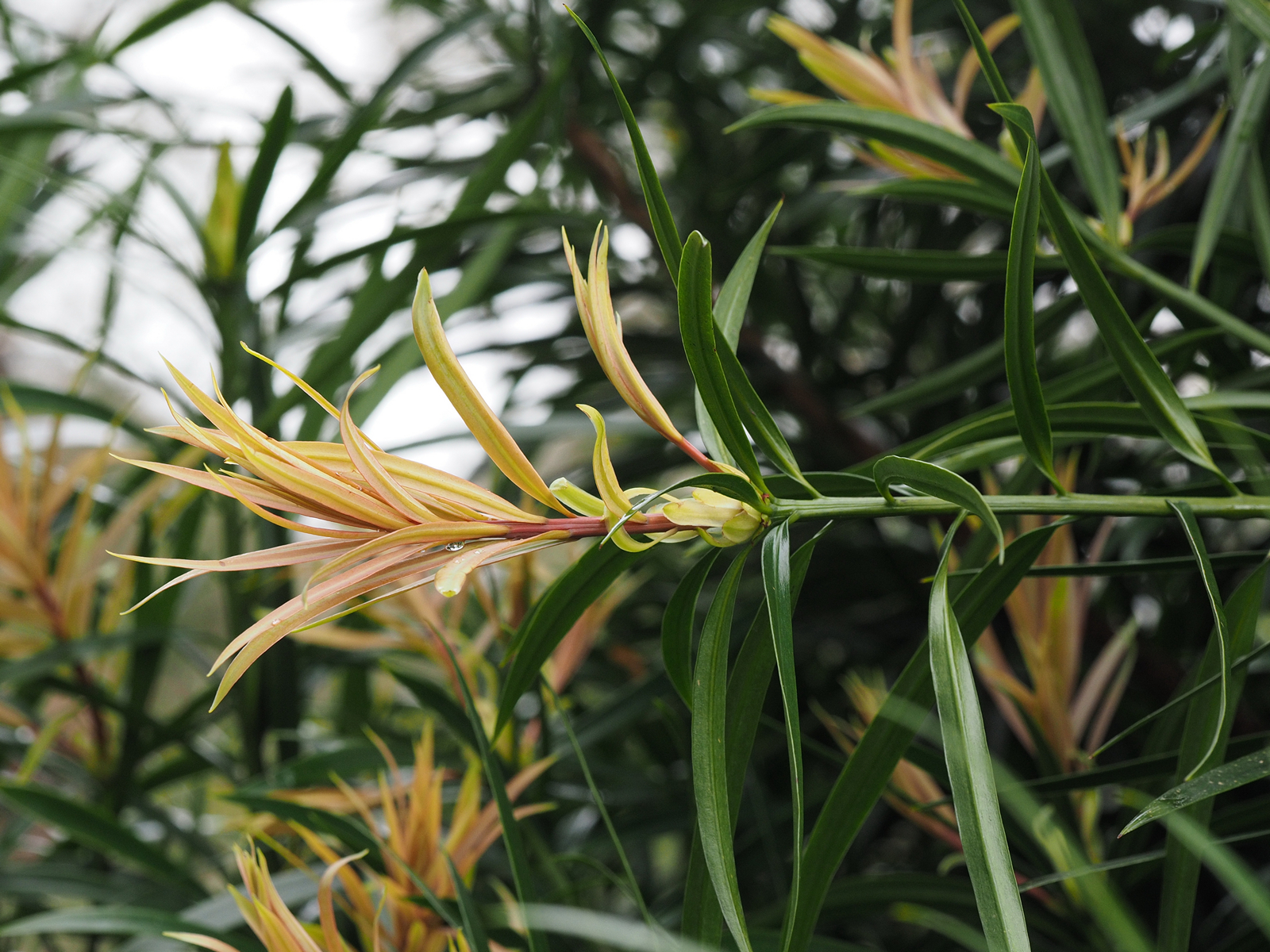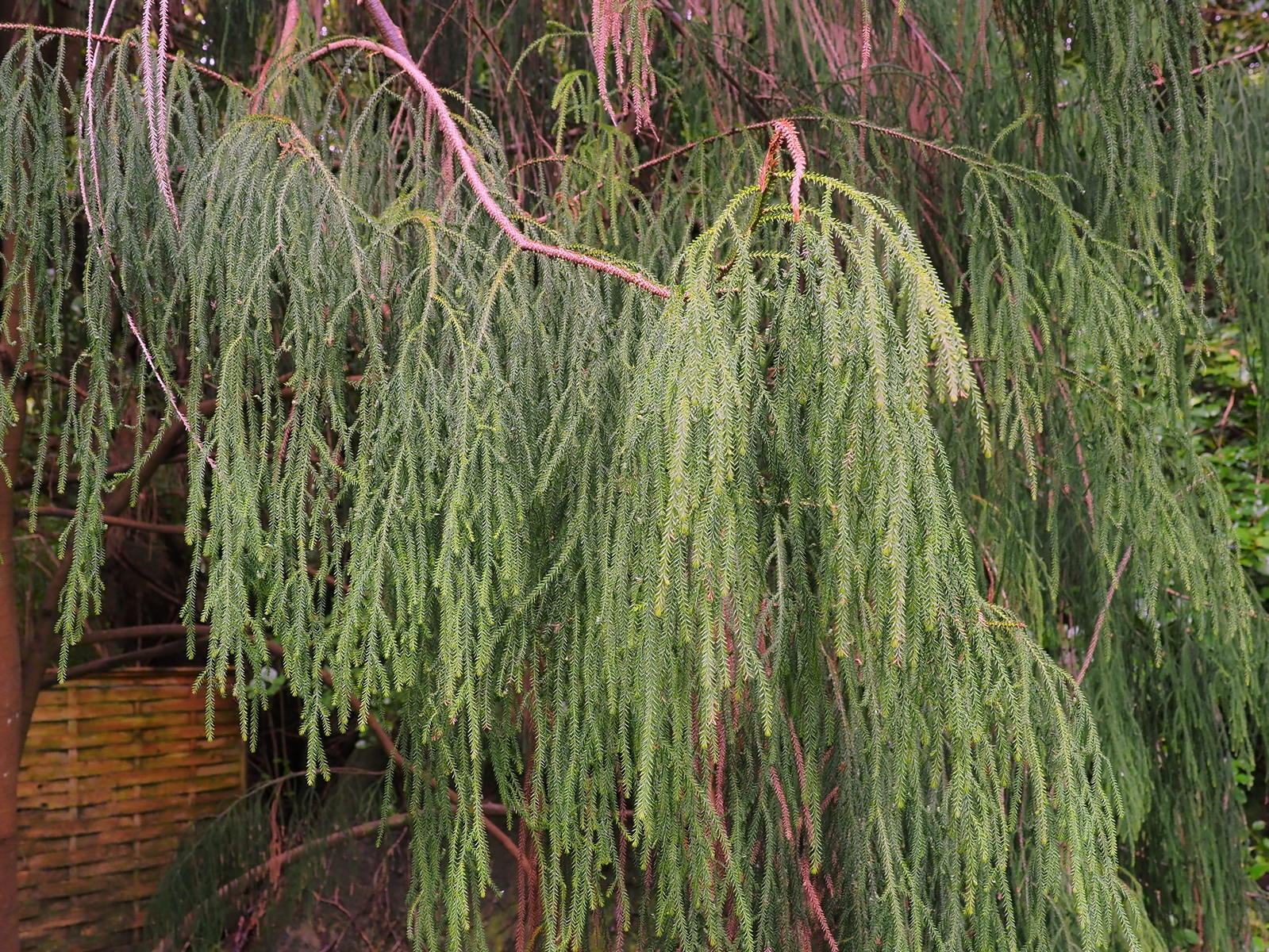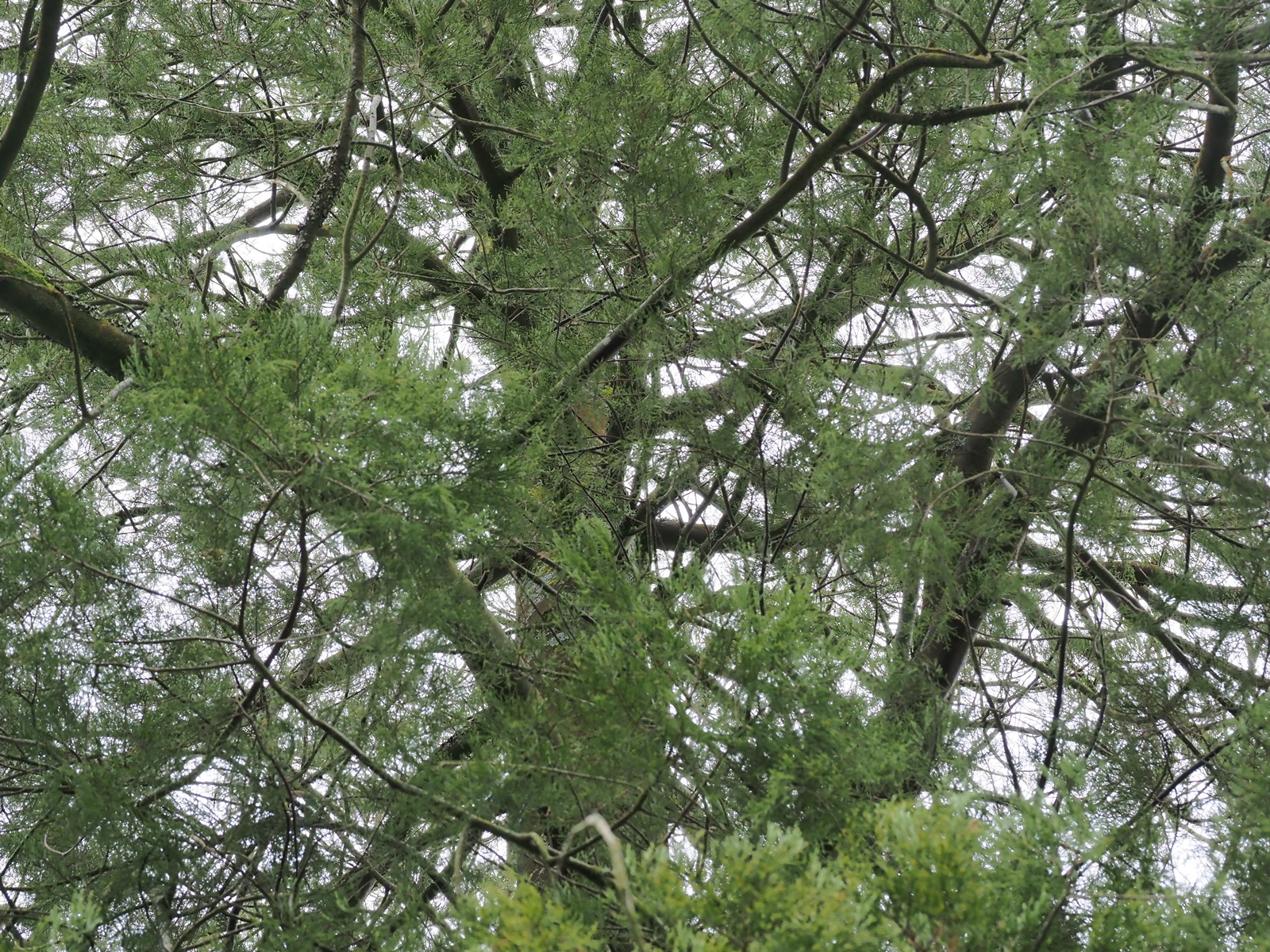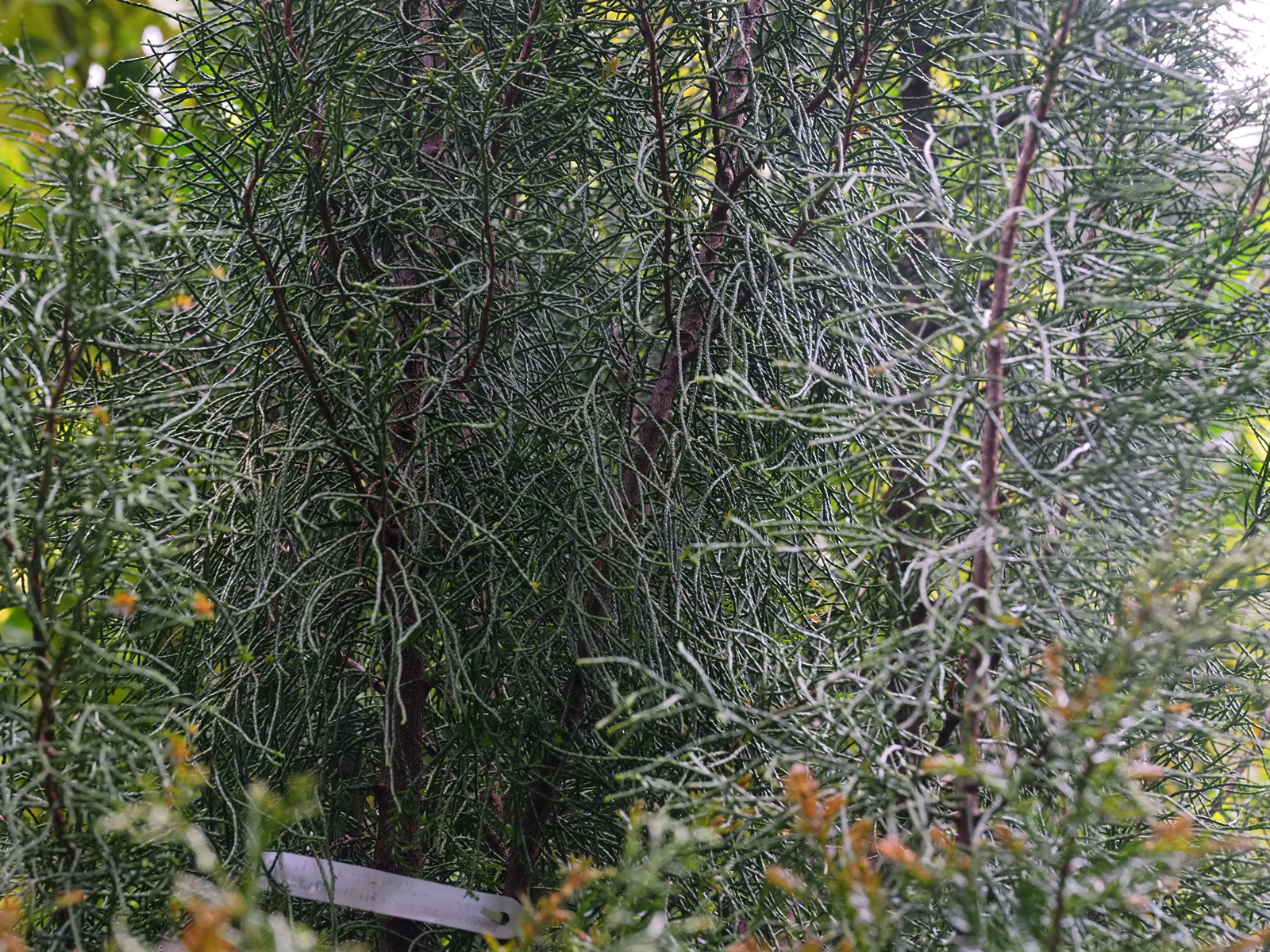Podocarpus Collection
Page 2
G. GRAHAM HITCHIN’S CROSSES
P.’County Park Fire’
(lawrencei x nivalis)
Raised in 1985, this hugely popular and attractive female podocarpus forms a low spreading shrub. The young growth is creamy- yellow then becoming salmon-pink and slowly turning green in summer. In winter the foliage is a rich purple-bronze. If secondary new growth emerges in late summer you can get all three colours at once.
P.’Flame’
(lawrencei x nivalis)
Male form with yellow and pink young growth in spring. It makes an attractive companion to P.’County Park Fire’
‘Orangeade’
(lawrencei x nivalis)
Female plant with orange young growth in spring and slightly bronze in winter
H. SOUTH AFRICAN SPECIES
P.henkelii –‘Henkels Yellowwood’
First grown to reasonable maturity in Cornwall in Tregrehan gardens this dramatic and inspiring plant seems to be fairly wind hardy but not frost hardy beyond -10oC at least in infancy.
P.henkelii
The new growth flushes quite late in the year and is a brighter shade of green than the mature foliage which adds to its attraction.
I. OTHER RELATED PODOCARPACEAE
Dacrydium cupressinium
‘Rimu’ or ‘Red Pine’
This is a very attractive ornamental tree with graceful drooping branches which hardly seem real. From a distance it often looks dead because its older branches and leaves look rusty brown. The newer growth is however green. Probably a conservatory plant in most of the UK or perhaps for container growing but the Caerhays plant is now up to around 10 feet outdoors.
Dacrycarpus dacrydiodes
‘White Pine’
(Formerly Podocarpus dacrydiodes) This peculiar tree is found in the lowlands of New Zealand. It has bronze or green leaves on slender drooping branches and certainly needs staking for the first few years after planting. By reputation this is a tender tree but Graham Hitchens says his has survived minus 150C. All forms in cultivation seem to be male.
Halocarpus bidwillii
’Bog Pine’
(Formerly Dacrydium bidwillii) A closely branched shrub growing to about 10 feet which is reasonably hardy even if rare. The plant at Burncoose has done just as well in the garden as the one we have retained in the show tunnel for safety. Both are about 4 feet after 15 years. This plant would make a good rockery feature.
Dacrydium franklinii
‘Huon Pine’
(Also known as Lagarostrobus franklinii) – This is a large graceful small tree with pendulous branches which can break off from their own weight. Bright green scale like leaves. Our 2 plants at Caerhays and Burncoose both seem to be male.
Saxegothaea conspicua
‘Prince Alberts Yew’
A yew or podocarpus like tree with loose drooping and spreading branches although its habit is very upright as a young plant. It was introduced by William Lobb in 1847 from Chile and Patagonia. It has male and female cones on the same plant. The female cones resemble those of a monkey puzzle. There is a very large mature plant at Tregullow gardens near Redruth.
Phyllocadus trichomanoides
‘Tanekaha’
A large shrub or small tree with a very unusual and distinctive habit. The plant has ovate, fan shaped lobed or entire flattened leaf like stems arranged in attractive fronds.
The young leaf-stems are reddish brown. The plant looks tender but isn’t even if it is very slow growing and peculiar in appearance.
Afrocarpus falcatus
(formerly Podocarpus falcatus)
A small tree with long narrow leaves from South Africa which is suitable only for the mildest locations but which, so far, is doing well at Caerhays and survived the last cold winter intact.
Prumnopitys taxifolia
(Podocarpus spicatus)
This is known as the Black Pine of New Zealand. It has slender drooping branches and small, narrow, bronze tinted leaves. Another plant which looks dead until you examine it closely.
Click here for information on how to care for Podocarpus
CONCLUSION
The expanding Caerhays collection of Podocarpus has added a new dimension to the garden, arguably well beyond its normal strengths as a hundred year old Wilson and Forrest based collection. I make no apology for enjoying the products of Graham Hitchens wild collecting and hybridising work but I wonder if even he had thought of his Podocarpus as a ponticum replacement windbreak?
In two key exposed areas of the garden the podocarpus collection are starting to perform a new function. They clearly will grow bigger in Cornwall than in Essex and some varieties are clearly more suitable than others. However, turning a potential windbreak into a National Collection may be something of a novelty.
Podocarpus are varied and exciting plants which should be very much more widely grown in gardens. In time we may even find time to attempt our own hybridisation programme but that is in the future.
The next step is to expand the collection with more new tender(ish) species and see if we can achieve a second National Collection at Caerhays. Watch this space!
CHW
27/05/09

















